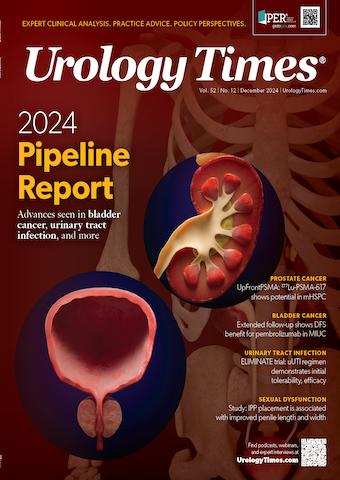News
Article
Urology Times Journal
Satisfaction compared for IPP reservoir placement in prevesical vs ectopic location
Author(s):
Key Takeaways
- The study assessed satisfaction with AMS 700 IPP based on reservoir location, involving 78 patients with chronic erectile dysfunction.
- No significant demographic differences were found between prevesical and ectopic reservoir groups, indicating physical composition may not influence reservoir placement.
“The take-home message…is it doesn't matter whether you put the reservoir in the ectopic location or the prevesical location. Patients tend to be satisfied in both locations,” said Mohit Khera, MD, MBA, MPH.
A study presented at the 2024 Sexual Medicine Society of North America Fall Scientific Meeting in Scottsdale, Arizona sheds light on patient satisfaction by location of the 3-piece AMS 700 with MS pump inflatable penile prosthesis (IPP).1
Mohit Khera, MD, MBA, MPH

Investigators led by Mohit Khera, MD, MBA, MPH, professor of urology at Baylor College of Medicine in Houston, used data from the It MATTERS (NCT04200937) prospective, multi-center registry to evaluate patient demographics and patient satisfaction responses in men whose AMS 700 reservoir was placed in prevesical space or ectopic space. Patients who were 18 years of age or older and had chronic, organic ED were included in the study. Follow-up took place post surgery and at 6 months, 12 months, and annually thereafter.
The investigators reported that 78 AMS 700 devices have been implanted, with reservoirs in the prevesical (n = 58) or ectopic (n = 20) space in 10 sites in the US.
“There were no significant differences in patient age, height, weight, or [body mass index] between groups, suggesting the patient’s physical composition may not be a significant factor in choosing the reservoir location. The general medical history of patients in both groups was similar, though patients with reservoirs placed ectopically had significantly more ‘other’ diagnoses falling outside of those previously listed, wrote the authors.
Mean duration of erectile dysfunction was 8.8 years, and the difference in mean duration of erectile dysfunction between the 2 groups was not significant (P = .638). Prostatectomy was the most common etiology of erectile dysfunction in the ectopic space (75%) vs 10.3% in patients whose reservoir was place in the prevesical space.
The investigators conducted post-surgery follow-up surveys between 0 and 90 days after surgery. A total of 67 responses were received, 50 of which came from the prevesical space group and 17 of which came from the ectopic space group. A majority of patients in both groups reported that they were either satisfied or very satisfied with the location of the reservoir. In terms of physical level of comfort, 52.0% (26/50 patients) in the prevesical space group said they were either comfortable or very comfortable, and 64.7% (11/17 patients) in the ectopic space group said they were either comfortable or very comfortable.
“Both groups of patients were asked whether they believed they felt the reservoir in the time since surgery, and a greater number of patients with a reservoir in the prevesical space responded ‘yes’ than those with a reservoir in an ectopic location (46.0% [23/50] vs 23.5% [4/17], respectively), though this difference was not significant (P = .097).
“The take-home message…is it doesn't matter whether you put the reservoir in the ectopic location or the prevesical location. Patients tend to be satisfied in both locations,” Khera told Urology Times.
The authors also stated in their conclusion that “Further enrollment and larger subgroups will allow for a more detailed understanding of differences in these groups over time.”
REFERENCE
1. Khera M, Carrion R, Tadros N, et al. Comparing preliminary demographics and patient satisfaction by location of 3-piece IPP Reservoir: It Matters. Presented at: 2024 Sexual Medicine Society of North America Fall Scientific Meeting. October 17-20, 2024. Scottsdale, Arizona. Abstract 321

































